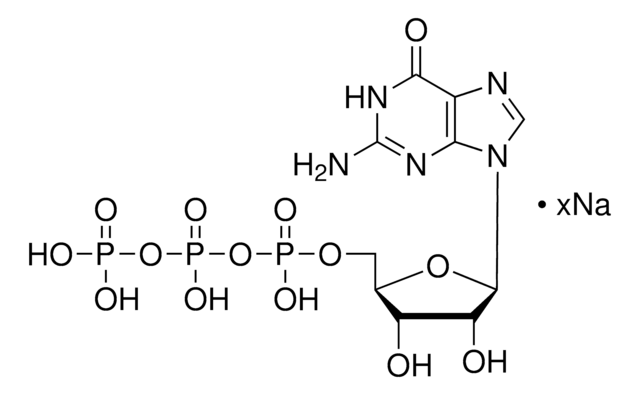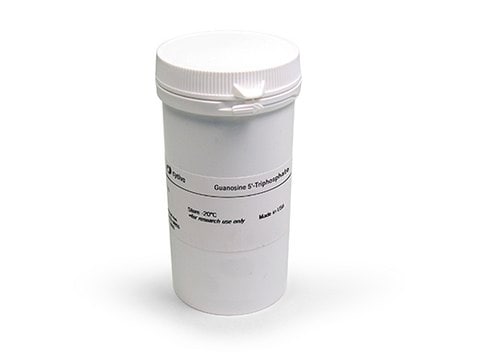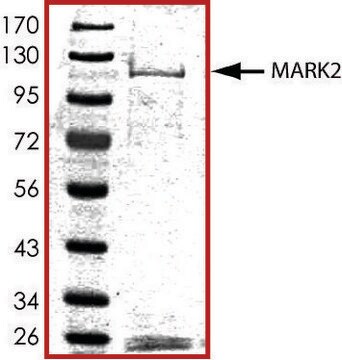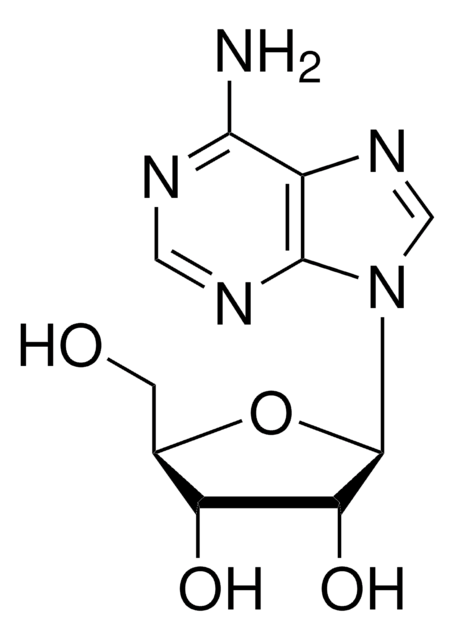Key Documents
A1852
Adenosine 5′-triphosphate (ATP) disodium salt hydrate
vial of 30 mg
Synonim(y):
ATP disodium hydrate
About This Item
Polecane produkty
pochodzenie biologiczne
microbial (Corynebacterium sp.)
Poziom jakości
Próba
≥99% (HPLC)
Postać
powder
opakowanie
vial of 30 mg
rozpuszczalność
water: 50 mg/mL, clear, colorless
temp. przechowywania
−20°C
ciąg SMILES
Nc1ncnc2n(cnc12)[C@@H]3O[C@H](COP(O)(=O)OP(O)(=O)OP(O)(O)=O)[C@@H](O)[C@H]3O
InChI
1S/C10H16N5O13P3.2Na.H2O/c11-8-5-9(13-2-12-8)15(3-14-5)10-7(17)6(16)4(26-10)1-25-30(21,22)28-31(23,24)27-29(18,19)20;;;/h2-4,6-7,10,16-17H,1H2,(H,21,22)(H,23,24)(H2,11,12,13)(H2,18,19,20);;;1H2/q;2*+1;/p-2/t4-,6-,7-,10-;;;/m1.../s1
Klucz InChI
NTBQNWBHIXNPRU-MSQVLRTGSA-L
Szukasz podobnych produktów? Odwiedź Przewodnik dotyczący porównywania produktów
Opis ogólny
Zastosowanie
- in rat hippocampal slice cultures to mimic synaptic signalling
- in the isolation of plasmid from primary porcine alveolar macrophages (PAMs)
- as a component of hot reaction kinase buffer for in gel kinase assay
Działania biochem./fizjol.
Kod klasy składowania
11 - Combustible Solids
Klasa zagrożenia wodnego (WGK)
WGK 2
Środki ochrony indywidualnej
Eyeshields, Gloves, type N95 (US)
Certyfikaty analizy (CoA)
Poszukaj Certyfikaty analizy (CoA), wpisując numer partii/serii produktów. Numery serii i partii można znaleźć na etykiecie produktu po słowach „seria” lub „partia”.
Masz już ten produkt?
Dokumenty związane z niedawno zakupionymi produktami zostały zamieszczone w Bibliotece dokumentów.
Klienci oglądali również te produkty
Nasz zespół naukowców ma doświadczenie we wszystkich obszarach badań, w tym w naukach przyrodniczych, materiałoznawstwie, syntezie chemicznej, chromatografii, analityce i wielu innych dziedzinach.
Skontaktuj się z zespołem ds. pomocy technicznej









